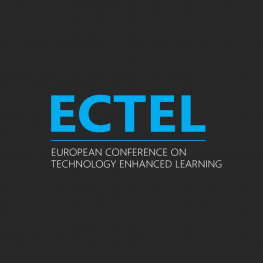Speakers
Kateryna Holubinka
Open University of the NetherlandsJindi Wang
Durham University, United KingdomMathieu Muratet
Sorbonne Université - LIP6, FranceStart
08/09/2023 - 11:00
End
08/09/2023 - 12:30
Address
Room 40.2.15 View mapSession 11: Inmersive Learning
Chair:  Mikhail Fominykh
Mikhail Fominykh
Implementing a Desktop VR Tool in a European University: Priorities and Challenges
Kateryna Holubinka, Corrie Urlings, Slavi Stoyanov, Roland Klemke and Renate de Groot
Abstract: Three-dimensional models (3D) of objects and spaces in virtual and augmented reality (VR/AR) have demonstrated their potential to improve understanding, engagement, motivation, and learning outcomes. However, there are multiple technical, pedagogical, and institutional challenges on the way of technology adoption in the education sector. In this group-concept-mapping study within the EurostarsTM-funded CloudClass project, we aim to identify optimal ways to use a VR/AR tool in the university context. Teachers, multimedia experts, and managers from a Spanish and a Dutch university were asked to complete the focus prompt “To use/implement CloudClass in education it is required/ needed that.…”. The generated statements were classified thematically and rated for importance and feasibility. 95 unique statements were generated and sorted statistically into 5 clusters: “1.Evaluation“, “2.Institutional requirements”, “3.Maintenance and training”, “4.Student requirements”, “5. Affordances and infrastructure”. A strong correlation was identified between the importance and feasibility of the identified clusters. To ensure sustainable implementation of a VR/AR tool like CloudClass in a university setting a holistic approach considering all identified clusters is needed. Clusters 3.Maintenance and training and 2.Institutional requirements are the low-hanging fruits to invest in, as both clusters scored highest on importance and feasibility.
📄 Read More: https://link.springer.com/chapter/10.1007/978-3-031-42682-7_8
Exploring the Potential of Immersive Virtual Environments for Learning American Sign Language
Jindi Wang, Ioannis Ivrissimtzis, Zhaoxing Li, Yunzhan Zhou and Lei Shi
Abstract: Sign languages enable effective communication between deaf and hearing people. Despite years of extensive pedagogical research, studying sign language online entails significant challenges, leaving some of the learners disengaged. Indeed, most of the existing approaches rely heavily on learning resources uploaded on websites, assuming that users will frequently consult them; however, this approach may feel tedious and uninspiring. To address this issue, several researchers have started looking into learning sign language in a game-based environment. However, the majority of the existing work still relies on website-based designs, with only a very few proposed systems providing an immersive virtual environment, and there are no user studies comparing website-based and immersive virtual environments. In this paper, we present an immersive environment for learning numbers 0-9 in American Sign Language (ASL). Our hypothesis is that an immersive virtual environment can provide users with a better learning experience and that users will show a higher level of engagement compared to website-based learning. We conducted a questionnaire-based user survey, and our initial findings suggest that users prefer to learn in an immersive virtual environment.
📄 Read More: https://link.springer.com/chapter/10.1007/978-3-031-42682-7_31
How to characterize and analyze the computational thinking skills of a learning game?
Mathieu Muratet
Abstract: Computational thinking is a discipline poorly mastered by elementary school teachers. To help teachers address these skills with their students, we develop the SPY game. In this paper we conduct a didactic analysis of the game and we propose a tool to describe the competencies targeted by the game based on game mechanics. The proposed tool has been applied to describe 21 of the 26 PIAF skills (a skills base on computational thinking). We show how these descriptions provide to teachers micro information about the active skills in a level or macro information about the evolution of a game scenario complexity.
📄 Read More: https://link.springer.com/chapter/10.1007/978-3-031-42682-7_18



